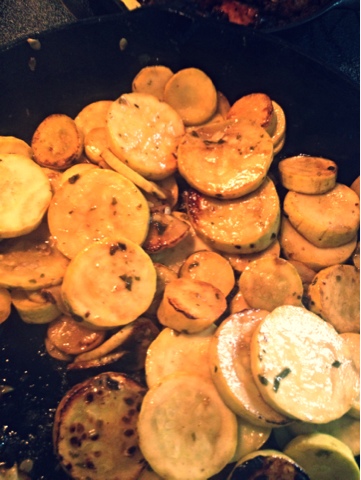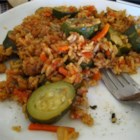WHY MILLING?
A lot of you ask me why I take the time to mill my own wheat.
My primary reason is health. I am tired of relying on government regulated labels to tell me what I am putting into my body and those of my family. I learned first hand that the chemicals that we are told "won't hurt us" can actually POISON us. I took matters into my own hands after being poisoned by FDA approved aspartame, and have made it my mission to feed myself and my family as natural and close to the source as possible. On our farm, we grow many of our own foods. What we cannot grow, we purchase in as natural a state as possible. Wheat berries are purchased from
The Granary, and I mill them into flour as we need it.
There are many health benefits to milling your own grain. I took this from another website, the Bread Machine Digest:
"All commercially made grain flours have had the germ removed. This is the part of the grain that contains healthy nutritious oils. They remove it to extend the shelf life of the grain other wise with it left in the flour would go rancid in a day or so unless it was frozen which is expensive and not something most supermarkets would be willing to do. So by removing the germ it can sit on the shelf for months or even years and still be edible. However, just because it is edible doesn’t mean it is good. Grain flours, even those with the bran removed, deteriorate quickly and loose a lot of vitamins and minerals. So, those flours you buy in the store, while still better for you than white flour, aren’t all that they could be and should be."
To clarify, within only 24 hours after milling flour, 90% of the nutrients in it are GONE. If you mill your flour, then bake it right away, you are providing yourself and your family with great vitamins and minerals they are likely lacking!
PRODUCTS
Grain Mill: I can only speak for what I have used personally. I bought the
NutraMill Grain Mill, and I absolutely love it. I also mill corn in here to produce the best corn meal I've ever tasted. (Fact: Corn meal goes rancid faster than any other grain. Taste corn meal from the store with your finger, then taste soem freshly milled corn... BIG difference.) The NutraMill Grain Mill runs quietly, mill quickly, and seems dummy proof. I break things, and I haven't had an issue with the NutraMill whatsoever! It's easy to clean, assembles quickly, and has a very large capacity.
Mixer: I cannot say enough wonderful things about the
Magic Mill Electrolux Assistant. Yes, it is a high ticket kitchen item, but you really do get what you pay for in this situation. I had a Kitchen Aid stand mixer that I was using to make breads, and it was advertised as a "bread mixer." After making probably 50 loaves/batches of breads, the motor burned out! All that heavy kneading really took a toll on it. I decided to purchase the Magic Mill Electrolux Assistant, and I haven't looked back since. I did take the time to read as many reviews as possible, and do as much homework as I could beforehand, and I can see why almost all of the reviews I read were praises. This machine will astonish you. It cuts through heavy dough as if it were pancake batter. It has attachments that keep your dough from sticking to the sides. It comes with a liquids mixing bowl and a flour mixing bowl, making it easy to add the wet ingredients later.
I think these two items are essential to bread making. There are a couple of other pans/accessories that should be on your wish list, whether you are a bread making expert, or a newbie. These are links to them:
Non-Stick Muffin Tin Your muffins LITERALLY fall out of this pan.
Non-Stick Bread Pan I dare you to try to get your bread to stick in this pan. It's impossible!
Cookie Sheet My one complaint about this... be careful when you pull it out of the oven- your cookies will literally slide around! There's no sticking here!


